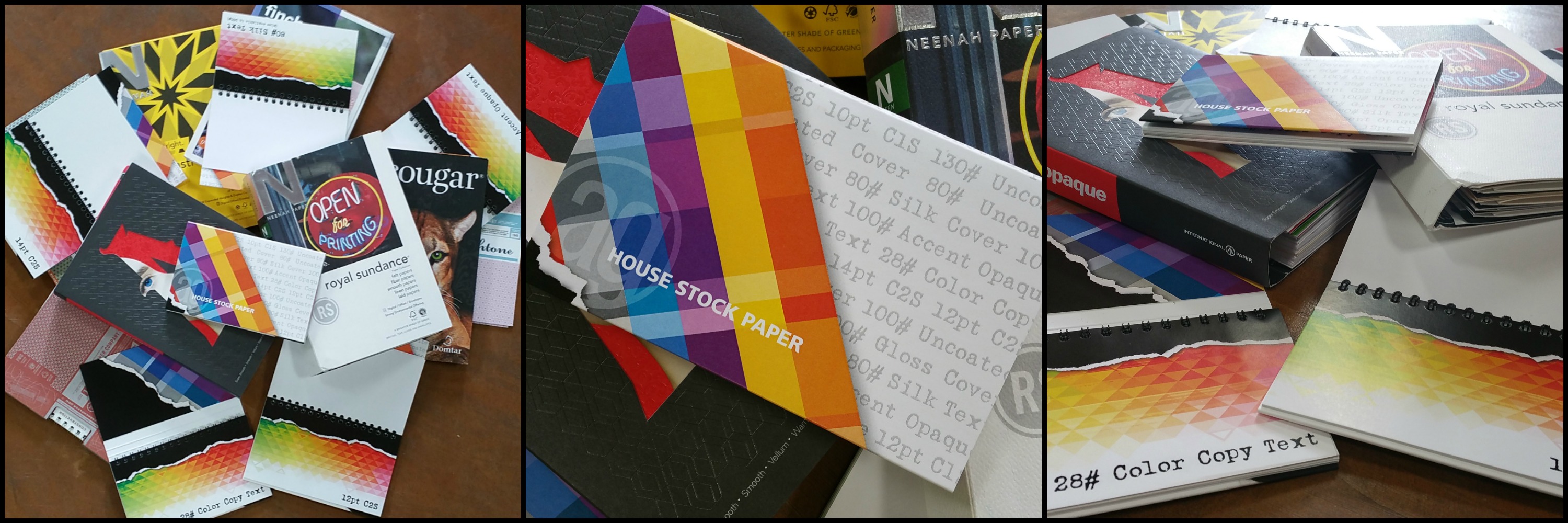
If you are like most business people, you know there are differences in types of paper, but that doesn’t mean you know which are the best types for which kinds of projects or even which options you have when submitting a job for printing. To make it easier for you to know your options and help you choose the right paper to fit your needs, the following is a brief rundown standard types and their best uses.
Coated and Uncoated Stock
Paper generally comes in two types: coated and uncoated. Coated paper has a sealed surface that enables crisp printing of photos, color gradients, and finely detailed graphics and images. Because it is coated, ink cannot penetrate and spread out in the paper, making the ink denser, cleaner, and sharper in appearance. Coated paper usually comes with glossy, matte, satin, and dull finishes available, but most people generally choose between either glossy or matte paper.
Uncoated paper is more absorbent and typically uses lower quality paper stock than coated paper. The greater absorbency means better type penetration, and lower quality paper means lower printing costs.
Glossy Paper Makes Color Pop
One of the most basic of choices you will need to make is whether to use paper with a glossy or matte finish. A glossy finish is shiny with a slick texture and sheen that reflects the light on the coated paper from which it is made. A matte finish does not reflect the light, has duller colors and sharper text on uncoated paper. So when you want to grab people’s attention with colorful images, photos, and graphics, paper with a glossy finish will do the job the best.
Glossy paper also is printed on thinner stock, which makes the final product lighter. If you are distributing your final materials via the U.S. Postal Service or need to ship a load to a trade show event or client, that lighter paper will help reduce your mailing and shipping costs.
Reasons to choose glossy paper include:
Attention-grabbing color.
Exceptional graphics quality.
Limited textual content.
Lighter paper stock.
Lower shipping costs.
Matte Paper Advantages
Got a lot of information to convey and don’t need to worry about making color stand out as much as informing your customers of your great deals? Then you want a matte-coated paper and printing. If you need to convey a lot of textual information, a matte finish works best by making the type much sharper than when using glossy paper. Images and graphics still look good in matter, but not as good as with glossy paper. Matte paper also can be more affordable due to use of lower quality paper stock and makes a good choice for newsletters and other printing jobs that contain a great deal of textual information and use lighter paper stock of lower quality to save on printing and mailing costs.
You should choose matte when you:
Have a lot of textual information.
Want sharper lettering and type.
Don’t care as much about color quality.
Want to reduce printing costs.
Are using lower-quality paper stock.
Why Opacity is Important
An important consideration that you, like many, might overlook when choosing your next printing project is the opacity of the paper. Opacity simply refers to how much light the paper allows through. The less light that gets through, the harder it is to see any printing that might be on the other side of the paper. The more opacity the paper contains, the less you can see of what is on the other side.
For simple, single-sided print jobs, low-opacity paper will work fine since there will be nothing on the other side. But when your print job calls for printed material on both sides, as with a two-sided sign, the opacity is important to prevent bleed-through of color and images from the light. The thickness of the paper used mostly affects its opacity, and coated paper generally has a higher opacity than non-coated counterparts. More opaque paper also provides a more vibrant format for your colored images and photos.
Reasons to care about opacity include:
Controls light bleed.
Sharper images and text.
Prevents observer confusion.
Impacts overall appearance.
Additional Expert Assistance
With the many different paper options available for your next printing job, it’s easy to get overwhelmed when trying to make an informed decision. After reading the information above, you should have a good understanding of the basics that go into choosing the best print paper for the job. Fortunately, the experts as AlphaGraphics also are available to ensure you select the best possible option from among the many available for your business’ next print job.